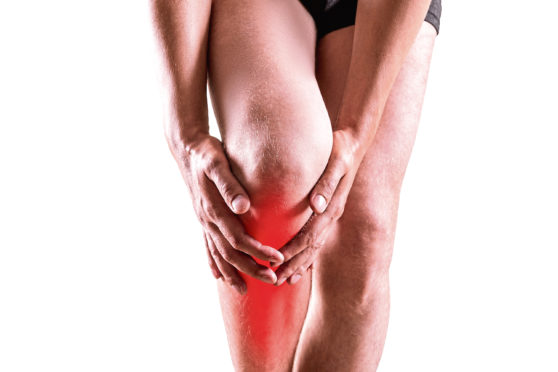
Joint pain can be irritating at best and crippling at worse.
And it’s certainly no fun to deal with now the weather has started to improve.
More than 10 million people suffer with arthritis or other conditions that affect the joints, causing aches, pains and plenty of discomfort, making it one of the major health complaints here in the UK.
“Joint pain affects individuals all year round, despite the common myth that it becomes worse in winter,” says LloydsPharmacy pharmacist Anshu Kaura.
“It can affect both your emotional and physical wellbeing, often causing a lack of mobility.
“That said, there are ways in which you can help improve your movement, with lifestyle changes and solutions to support and protect the joints.”
Here, Kaura recommends her top drug-free alternatives to help manage joint pain so that, when we’re able to once more, we can get outside and enjoy the good weather.
It might sound counter-intuitive but a bit of light exercise may help to relieve some of the annoying symptoms of joint troubles.
Now, hiking out and about is not really practical right now but if you’ve got a garden, great, and the hall or stairs could come in handy.
“Walking is a great way to get physically active and enjoy the warm weather during the summer,” says Kaura.
“And it can also help to increase muscle strength, particularly in the lower body.”
To reap the benefits of exercise without risk of injury, Kaura suggests trying Nordic walking.
This type of low-impact fitness involves using specially-designed walking poles to help propel you forward as you walk, which takes the pressure off the knees and joints.
“Nordic walking has been shown to be particularly effective in helping those with balance or joint conditions,” notes Kaura.
“Plus, the poles absorb some of the ground impact, reducing any negative bearing on the knees.”
Once we’re out of lockdown, check out your local area to see if there are any walking groups you can join, as exercising in a group can keep you motivated to attend week after week.
If you feel a sore knee flaring up, it’s tempting to raid the medicine cabinet for some respite.
However, Kaura recommends seeking out more gentle methods before resorting to the strong stuff.
“You shouldn’t have to always turn to painkillers to provide relief, and it’s important to remember that whilst painkillers may alleviate the pain, they won’t necessarily enhance your movement or help protect your joints,” she warns.
“Topical gels can be very effective at alleviating the pain, and the active ingredients can even help your joints move more freely,” she says.
“You could try something like Flexiseq Gel, available from Lloyds Pharmacy, for drug-free, targeted care for joint wear and tear.
“Topically applied to joints, it delivers deep, penetrating lubricants, helping to support joint health.”
As for “going Mediterranean”, Kaura says: “Leading a healthy diet and trying to lose a little weight through light exercise may pay dividends in reducing your joint pain and increasing your ability to stay active.
“There’s a strong link between diet and joint pain, both in maintaining a healthy weight and obtaining beneficial nutrients,” she explains, adding that excess fat around the joints can put strain on the body and can sometimes increase inflammation.
Kaura says that studies have found that diets rich in fruit and vegetables, such as the Mediterranean diet, have a number of health benefits, including improved mobility in the lower body and less arthritis-led pain.
“Mediterranean diets are typically high in omega-3 fats found in oily fish, which have anti-inflammatory properties that can help ease symptoms,” she notes.
“Vitamin K is another nutrient shown to support the bone cartilage to reduce symptoms of joint pain. Good sources are typically found in leafy vegetables and cereals.”
Swimming is another activity we can look forward to once things settle down – unless you have a pool! – as it could help to support your joints.
“Swimming has many benefits on the body, particularly if you experience joint pain on your knees,” says Kaura.
Essentially, the water supports your body, allowing you to float, meaning that there’s less impact on the skeletal system, including your joints.
“Gentle swimming or water aerobics can help strengthen your muscles around your joints, reducing the impact of pain,” adds Kaura.
“Not only is swimming a pain-free way to keep moving, but strengthening your muscles can help reduce the degenerative impact of joint pain.”

Enjoy the convenience of having The Sunday Post delivered as a digital ePaper straight to your smartphone, tablet or computer.
Subscribe for only £5.49 a month and enjoy all the benefits of the printed paper as a digital replica.
Subscribe